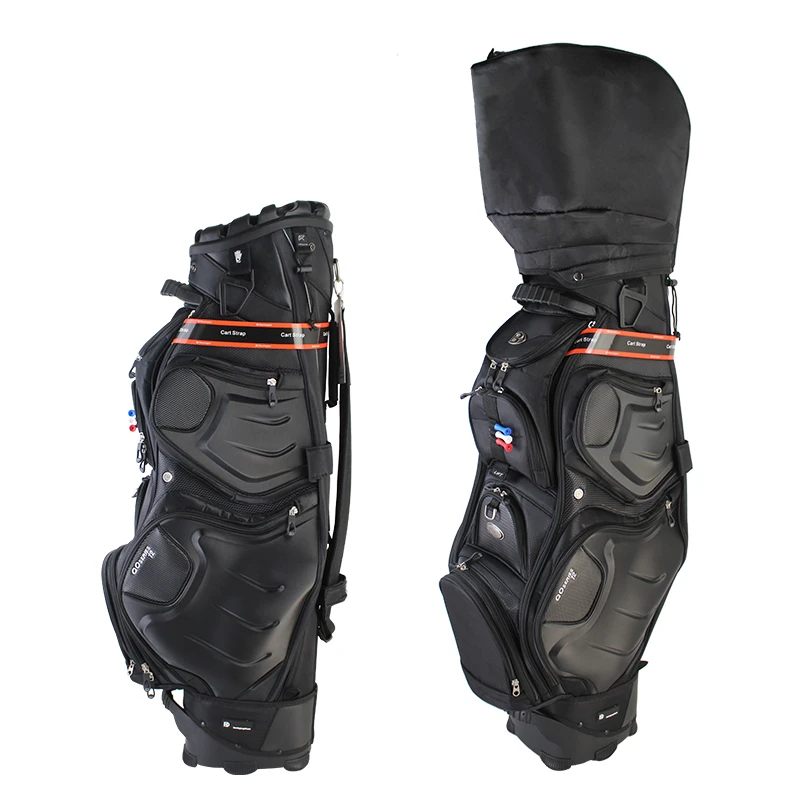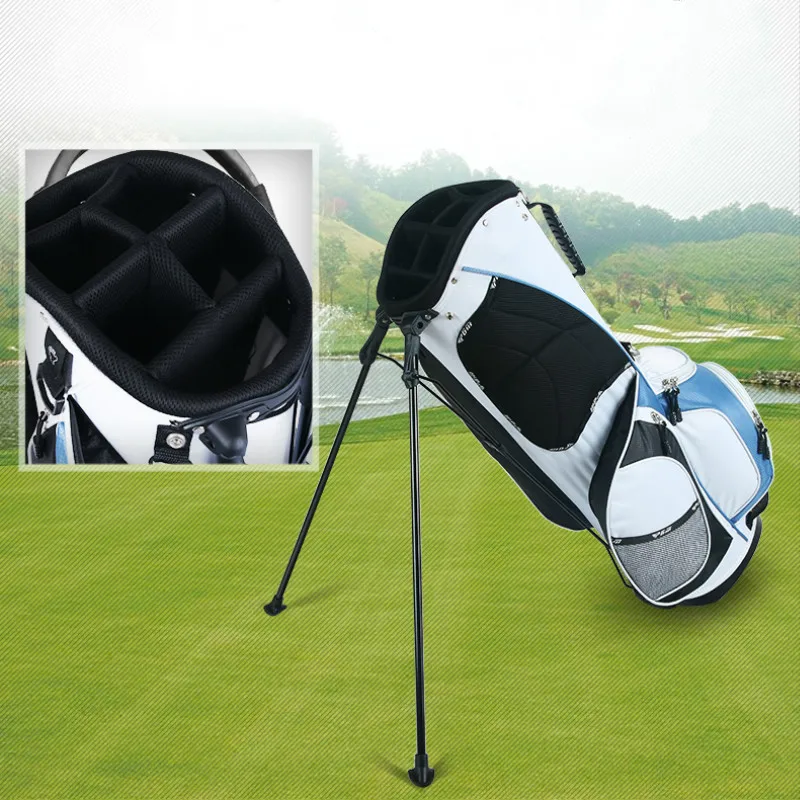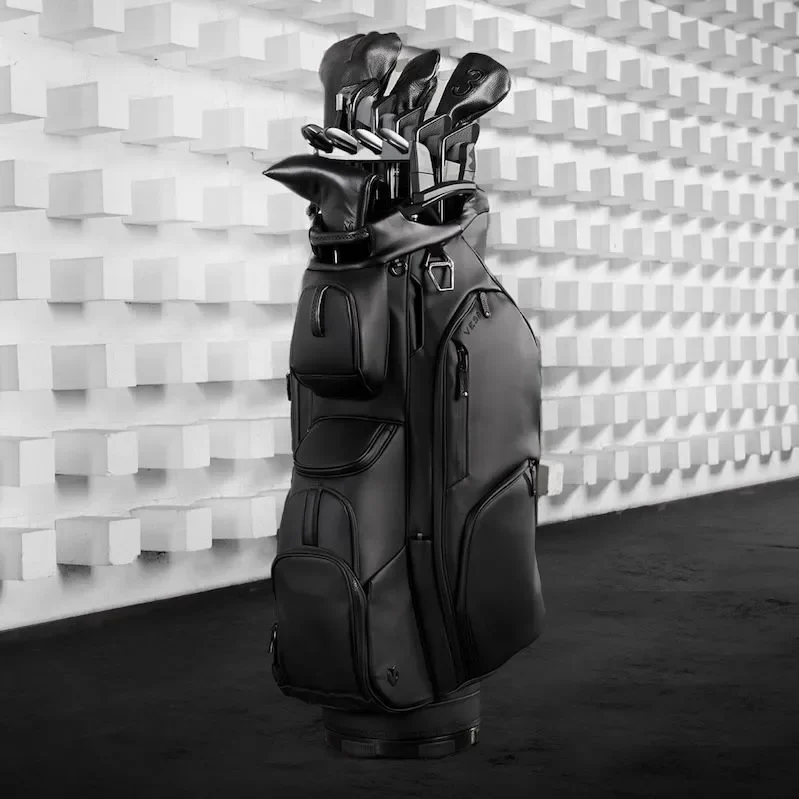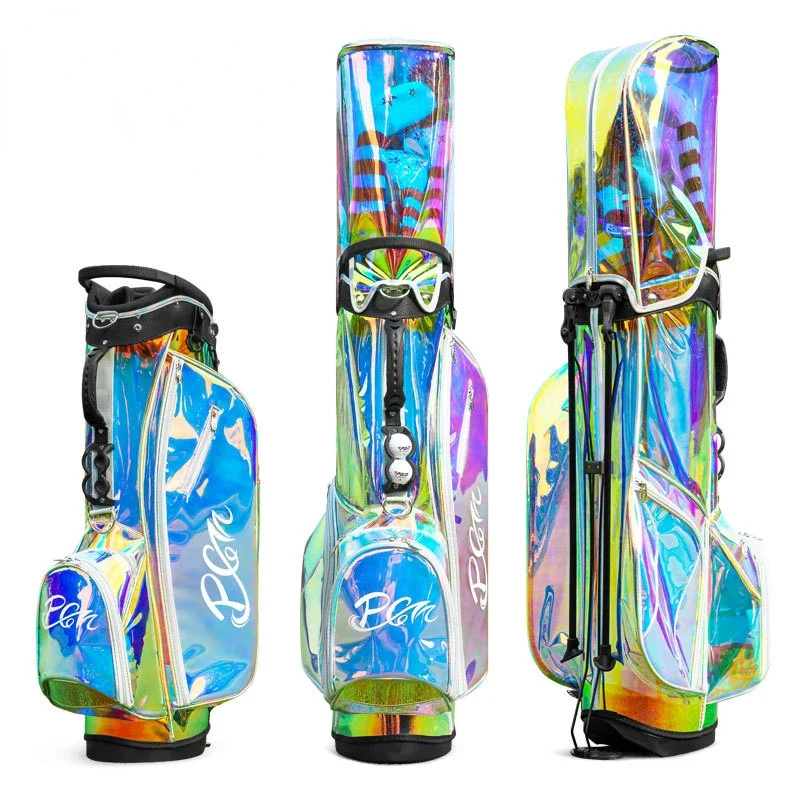When it comes to golf gear, one of the most important decisions you’ll make is selecting the right golf bag. With so many types of golf bags available, finding the best fit depends on your playing style, frequency, and personal preferences. Whether you walk the course, ride in a cart, or travel for tournaments, there’s a bag designed to meet your needs.
Golf bags do more than carry clubs—they organize gear, protect equipment, and enhance your overall experience. The types of golf bags include carry bags, cart bags, stand bags, tour bags, and travel bags. Each offers unique features that cater to different players.
Carry bags are lightweight and designed to be walked with. Stand bags have retractable legs to keep the bag upright on the course. Cart bags fit securely on motorized or push carts. Tour bags resemble those used by professionals and offer maximum storage. Travel bags protect your set during flights or long trips.
Beyond function, appearance matters. Many brands offer stylish designs, color options, and custom details. Some include built-in rain hoods, hydration pockets, or cooler compartments.
Durability is also key. High-quality materials like nylon, polyester, and reinforced stitching extend the life of your bag. Water-resistant coatings help in wet conditions.
Understanding the types of golf bags helps you invest wisely. A well-chosen bag supports your game and keeps your clubs safe for years.
 Carry Bags: Lightweight and Designed for Walking
Carry Bags: Lightweight and Designed for Walking
Carry bags are among the most common types of golf bags. They are built for golfers who walk the course without a cart. Their main advantage is light weight. Most weigh between 4 and 7 pounds. This reduces strain during a full 18-hole round.
These bags feature a single shoulder strap or a dual-strap system. Dual straps work like a backpack. They distribute weight evenly. This increases comfort and reduces shoulder fatigue.
Club dividers keep clubs organized. Top dividers separate clubs into 2 to 6 sections. This prevents tangling and makes it easier to find the right club.
Pockets are limited but functional. They hold essentials like tees, balls, gloves, and a rangefinder. Some include insulated pockets for drinks.
Carry bags usually lack stand legs. You must set the bag down or lean it against something. However, their compact size makes them easy to transport.
They fit well in car trunks and are ideal for casual players. Many models are affordable and stylish.
Because they prioritize portability, they don’t offer as much storage as larger bags. But for walkers, they are practical and efficient.
Thus, if you enjoy a minimalist, active golf experience, a carry bag is a smart choice.
Stand Bags: The Best of Both Worlds
Stand bags combine portability with convenience. These types of golf bags include retractable legs. They deploy automatically when you set the bag down. This keeps it stable and upright on the course.
Most stand bags use a two-legged design. Some have three legs for better balance. The mechanism is spring-loaded. It activates with a slight tilt.
They are slightly heavier than carry bags. Weights range from 6 to 9 pounds. However, the added function justifies the extra load.
Dual shoulder straps enhance comfort. They allow hands-free carrying. The straps are often padded and adjustable.
Club organization is strong. Many models have 6 to 14-way top dividers. This keeps clubs neatly separated.
Pockets are more numerous than in carry bags. You can store rain gear, snacks, extra clothes, and electronics. Some include fleece-lined valuables pockets.
The legs fold flat when not in use. This maintains a sleek profile. The bag still fits in most golf carts.
Stand bags are popular among weekend players. They support walking without requiring a cart.
Additionally, they are durable. Many use water-resistant fabric. A built-in rain hood adds extra protection.
For golfers who walk but want convenience, stand bags are an excellent option.
 Cart Bags: Built for Stability and Storage
Cart Bags: Built for Stability and Storage
Cart bags are designed to stay on a motorized or push cart. They are one of the most popular types of golf bags among course regulars. Their structure prioritizes organization and capacity.
These bags are heavier. Most weigh between 8 and 12 pounds. However, since they don’t need to be carried, weight is less of an issue.
They feature a rounded bottom. This fits securely into cart brackets. A low center of gravity prevents tipping.
Club dividers are extensive. Many have full-length 14-way tops. This keeps every club in place. It also makes cleaning easier.
Pockets are abundant. You can find 8 to 10 pockets on premium models. Options include insulated cooler pockets, ball pockets, and large apparel compartments.
Some include accessory sleeves. These hold rangefinders, umbrellas, or towels. Others have glove clips or pen holders.
The top is reinforced. It supports frequent club access. Durable zippers and fabric resist wear.
Cart bags often lack stand legs. They are not meant to be walked with.
They also tend to be larger. This limits trunk space. But the trade-off is superior storage.
For players who ride carts, cart bags deliver the best functionality and long-term value.
Tour Bags: Professional-Grade Performance
Tour bags are the largest and most feature-rich types of golf bags. Used by professionals and serious amateurs, they offer maximum storage and durability.
These bags resemble those seen on the PGA Tour. They are wide and tall. Most weigh over 12 pounds. Their size supports extensive gear needs.
Club organization is top-tier. Full 14-way dividers extend all the way to the bottom. This prevents club damage and keeps everything in place.
Pockets are highly customizable. You can find more than 10 pockets. Some include padded laptop sleeves or removable pouches.
The base is solid. It includes rubber feet or a flat bottom. This keeps the bag upright on hard surfaces.
Many include a handle on the side. This makes lifting in and out of trunks easier.
They are built for travel. Strong zippers and reinforced stitching resist daily use.
However, they are not designed for walking. They lack straps and stand legs.
Tour bags are often used by caddies. They offer space for yardage books, extra shoes, and personal items.
For golfers who play frequently and need to carry a lot, a tour bag is a powerful choice.
 Travel Bags: Protecting Your Investment on the Move
Travel Bags: Protecting Your Investment on the Move
Travel bags are essential for golfers who fly or drive long distances. These types of golf bags focus on protection, not daily play.
They come in hard and soft shell versions. Hard cases are rigid. They resemble suitcases. They offer maximum crush resistance.
Soft cases are lighter. They use padded fabric and frames. They are easier to store when not in use.
Both types include wheels and telescoping handles. This makes them easy to roll through airports.
They fully enclose your golf bag. Zippers run around the entire case. Some include lockable zippers for security.
Interior padding protects clubs and bag. Soft lining prevents scratches. Reinforced ends guard against drops.
Many include exterior pockets. These hold shoes, gloves, or travel documents.
Some have a “club head garage.” This secures the club heads separately. It reduces movement during transit.
Most meet airline size requirements. Always check with your carrier before flying.
Travel bags are not used on the course. They carry your regular golf bag.
For frequent travelers, a travel bag is a must-have. It keeps your gear safe and stress-free.
Choosing the Right Bag for Your Playing Style
Picking the best type depends on your habits. First, ask if you walk or ride. Walkers should choose carry or stand bags. Riders benefit from cart or tour bags.
Next, consider how much gear you carry. Minimalists may prefer lightweight carry bags. Those with lots of accessories need more pockets.
Frequent travelers must invest in a travel bag. Even if you use a cart bag daily, a travel case protects it on flights.
Think about durability. If you play often, choose strong materials. Look for water-resistant fabric and reinforced stitching.
Brand matters. Top names like Callaway, TaylorMade, Ping, and Titleist offer reliable options. They also provide warranties.
Try before you buy if possible. Visit a store and test the straps, pockets, and weight.
Read reviews. Other golfers share real experiences. They highlight pros and cons you might miss.
Also, consider the climate. Rainy areas need built-in hoods. Hot regions benefit from insulated drink pockets.
Making a thoughtful choice ensures your bag supports your game for years.
 Caring for Your Golf Bag
Caring for Your Golf Bag
Proper care extends your bag’s life. First, clean it after each use. Wipe down the exterior with a damp cloth.
Empty all pockets. Remove sand, grass, and moisture. This prevents odors and mold.
Let it dry completely. Never store a wet bag. Hang it in a dry area.
Spot clean stains with mild soap. Avoid harsh chemicals. They can damage fabric and zippers.
Check zippers regularly. Lubricate them with zipper wax if they stick.
Inspect straps and legs. Tighten screws on stand bags. Replace worn padding.
For travel bags, check wheels and handles. Lubricate moving parts.
Store in a cool, dry place. Avoid direct sunlight. UV rays can fade colors and weaken materials.
Replace damaged parts quickly. Many brands sell replacement legs or straps.
With routine care, any of the types of golf bags can last five years or more.
Frequently Asked Questions
Can I use a stand bag on a cart?
Yes. Most fit in brackets. But they may not sit as securely as cart bags.
Are carry bags good for beginners?
Yes. They are affordable and easy to use.
Do cart bags have stand legs?
No. They are not designed to stand alone.
Can I check my golf bag without a travel case?
You can, but it’s risky. Airlines often damage exposed bags.
Are tour bags worth the price?
For frequent players, yes. They offer unmatched storage.
Do stand bags come with rain hoods?
Most include built-in hoods. They deploy quickly in storms.
Can I fit shoes in a carry bag?
Some have small pockets. But most lack space for large items.
Are travel bags allowed as checked luggage?
Yes. Most airlines accept them as sports equipment.
 Final Thoughts: Finding the Best Type of Golf Bag for You
Final Thoughts: Finding the Best Type of Golf Bag for You
Understanding the types of golf bags helps you make a smart, lasting choice. Whether you walk, ride, or travel, there’s a bag that fits your needs.
Each type offers distinct benefits. Carry bags support light, active play. Stand bags add convenience. Cart bags maximize storage. Tour bags deliver pro-level function. Travel bags protect your gear.
Your game, lifestyle, and budget guide your decision. Choose one that matches how you play.
With proper care, your golf bag becomes a trusted companion on every course.
So, take time to explore your options. Because the right types of golf bags don’t just carry your clubs—they enhance your entire golf experience.
